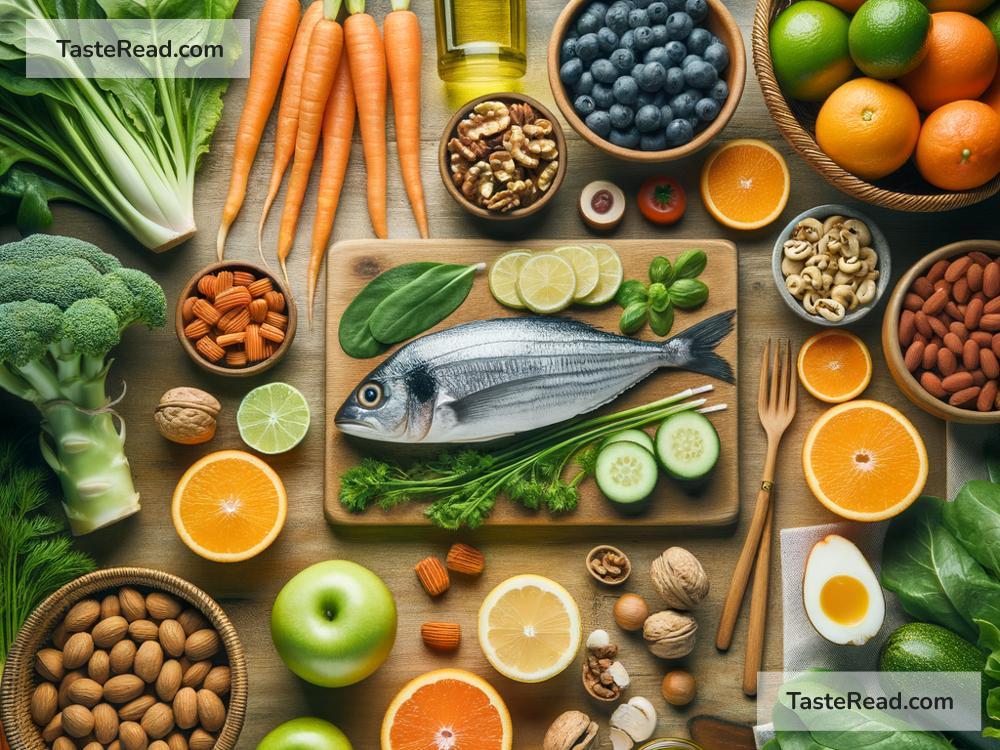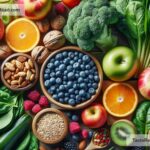Foods That Protect Against Glaucoma: Simple Steps for Eye Health
When we think about taking care of our eyes, many of us focus on glasses, contact lenses, or getting regular check-ups at the eye doctor. But did you know that the food you eat can also play a big role in protecting your vision? Certain foods are packed with nutrients that can help protect your eyes and reduce the risk of diseases like glaucoma. Eating a healthy diet is not only good for your overall health but can also keep your eyes strong and healthy for years to come.
In this blog, we’ll explore the foods that can protect against glaucoma, what they do for your eyes, and how to incorporate them into your diet.
What Is Glaucoma?
Before we dive into the list of foods, let’s quickly explain what glaucoma is. Glaucoma is an eye condition where the optic nerve (a nerve in the back of your eye that helps send information to your brain) gets damaged, usually due to high pressure inside your eye. Over time, glaucoma can lead to vision loss or even blindness if it’s not treated. It often develops slowly, without warning signs, making it especially dangerous.
While there’s no cure for glaucoma, research shows that a healthy diet filled with specific nutrients can help protect your eyes and possibly slow down the progression of this condition.
Foods That Help Protect Against Glaucoma
Here are some foods you can include in your diet to keep your eyes healthy and potentially lower your risk of glaucoma:
1. Leafy Green Vegetables
Spinach, kale, collard greens, and other dark leafy greens are rich in antioxidants, especially lutein and zeaxanthin. These antioxidants help protect your eyes from damage caused by harmful molecules called free radicals. Leafy greens also provide vitamin C, which may help lower intraocular pressure (the pressure inside your eye).
- How to eat them: Add a handful of spinach to your smoothie, toss kale into your salad, or sauté collard greens with garlic for a tasty side dish.
2. Carrots
Carrots are famous for being good for your eyes, and there’s truth to the claim. They’re high in beta-carotene, which your body converts into vitamin A. This vitamin is essential for healthy vision and may help reduce the risk of optic nerve damage associated with glaucoma.
- How to eat them: Snack on raw carrots, roast them with olive oil, or add them to soups and stews for a nutrient boost.
3. Citrus Fruits
Oranges, grapefruits, lemons, and tangerines are loaded with vitamin C. This vitamin is an antioxidant that can reduce inflammation and protect your eyes from oxidative stress. Some studies suggest that vitamin C can support overall eye health, including reducing pressure in the eyes, which is key for managing glaucoma.
- How to eat them: Enjoy a fresh orange for breakfast, squeeze lemon juice over your salad, or make a refreshing citrus smoothie.
4. Fish Rich in Omega-3 Fatty Acids
Salmon, tuna, mackerel, and sardines are excellent sources of omega-3 fatty acids, which are important for eye health. Omega-3s help boost blood circulation to the eyes, reduce inflammation, and protect the optic nerve from damage. They may also help with dry eye, which is a common problem for people with glaucoma.
- How to eat them: Grill salmon for dinner, add tuna to your sandwich, or snack on sardines with crackers.
5. Nuts and Seeds
Almonds, walnuts, flaxseeds, and chia seeds are packed with vitamin E and omega-3 fatty acids. Vitamin E is another powerful antioxidant that helps protect your eyes from damage caused by aging and oxidative stress. Combining vitamin E with other nutrients can have a protective effect on your eyes.
- How to eat them: Snack on a handful of almonds, sprinkle chia seeds on yogurt, or add ground flaxseeds to smoothies.
6. Eggs
Eggs contain lutein and zeaxanthin, which help protect the retina from damage. These nutrients are also found in leafy greens, but eggs are more easily absorbed by the body. Eggs are also rich in vitamin E, another powerful antioxidant.
- How to eat them: Scramble eggs for breakfast, make a veggie-packed omelette, or boil them for on-the-go snacks.
7. Berries
Blueberries, strawberries, and blackberries are rich in vitamin C and other antioxidants that help protect eye tissues from damage. Berries also improve blood circulation, which is essential for keeping your optic nerve healthy.
- How to eat them: Add berries to your cereal, blend them into smoothies, or eat them fresh as a snack.
Lifestyle Tips for Healthy Eyes
In addition to eating the right foods, there are other simple steps you can take to protect your vision and decrease your risk of glaucoma:
- Stay hydrated: Drinking plenty of water can help keep your eyes hydrated and reduce intraocular pressure.
- Exercise regularly: Staying active improves blood circulation and reduces eye pressure.
- Limit caffeine: Too much caffeine can temporarily raise intraocular pressure.
- Protect your eyes from UV rays: Wear sunglasses when you’re outside.
Conclusion
Eating a healthy diet rich in nutrients that support eye health is a simple and effective way to protect yourself against glaucoma. By adding foods like leafy greens, carrots, citrus fruits, omega-3-rich fish, nuts, eggs, and berries to your meals, you’re giving your body the tools it needs to keep your eyes in top shape.
Remember, while food can play a big role in preventing glaucoma, it’s also important to see your eye doctor regularly and follow their advice. Combining regular eye care with a nutrient-rich diet is the best way to keep your vision sharp and ensure that your eyes stay healthy for years to come. Take care of your eyes—they’re your windows to the world!


